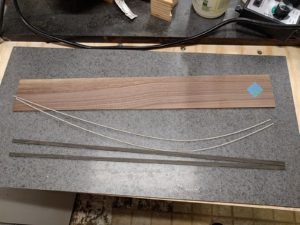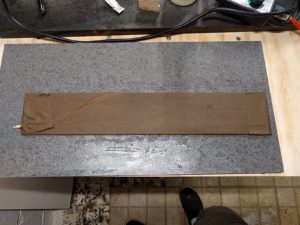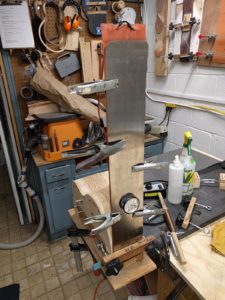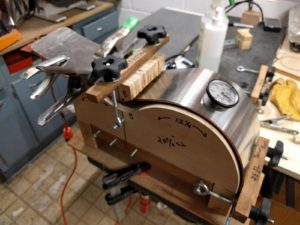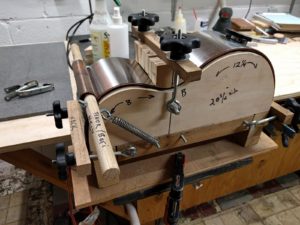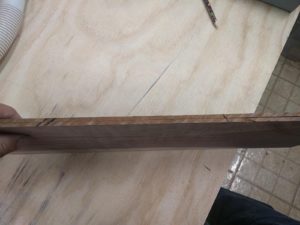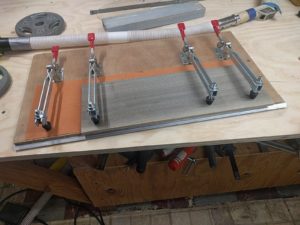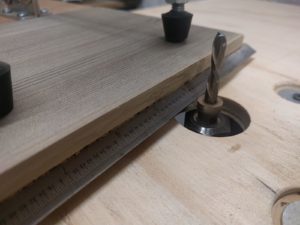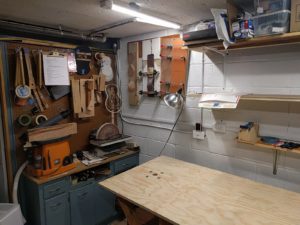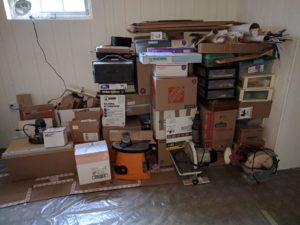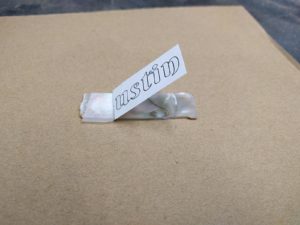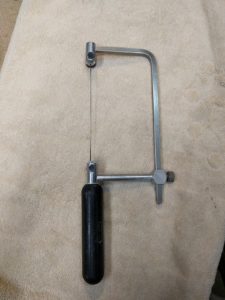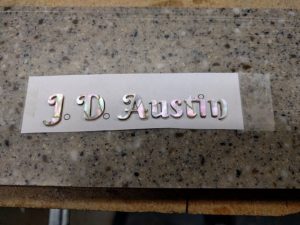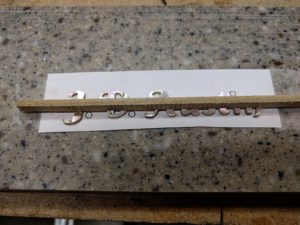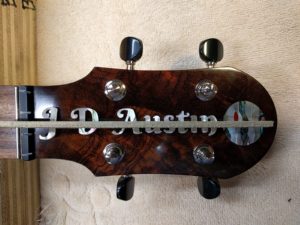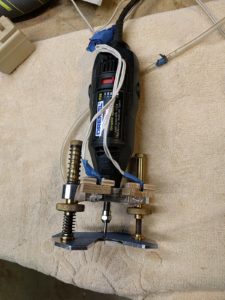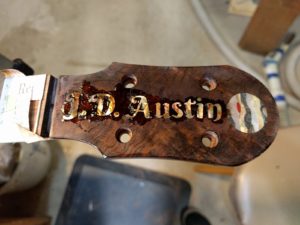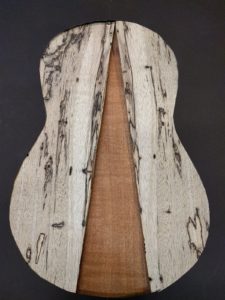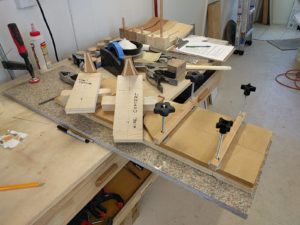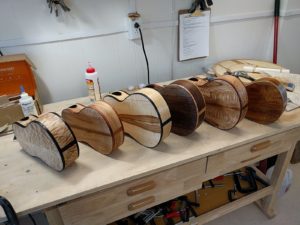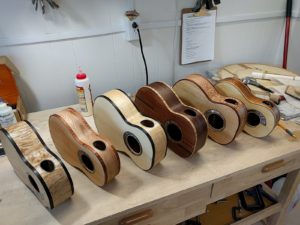I have been bending the sides for this next set. I use a silicone heating blanket and a home-made form, based on a Fox bender, to do the bending as follows.
I bend one side at a time. The ‘package’ that goes into the bender is the side, the binding, and the purfling, so I have all the necessary pieces later. (If I forget to add the binding and purfling I have to load them up and do an extra bend, but of course, that would never happen …) Notice the piece of blue tape. Since I bend one side at a time it is vitally important that one maintains the correct orientation of the two sides, so that book-match comes out correctly on the base of the instrument. I lay the two sides out, and stick pieces of blue tape on the correct adjoining sides. That blue tape end always goes on the outside of the bender, at the base of the lower bout.
I wrap things in brown paper (recycled packing material). I have been spraying the sides with a little veneer softener as well as a little water and that seems to really help make the side bend easily. The brown paper is sprayed with water, and the package is wrapped up tightly to keep the binding and purfling together into a nice package. I echo the blue tape onto the outside of the brown paper with a little mark so I can keep things aligned correctly.
I use an electric silicone heating blanket to heat things up. These blankets will get hot enough to actually char the wood, so there is plenty of heat, and one must be a little careful. I make up a sandwich, from the inside out, consisting of a stainless steel metal slat, the wood, the heating blanket, and another metal slat. This is clipped together with spring clamps.
Then things are put into the bender. A lot of people start the bend from the waist, but I have found that this is a bit inexact. I put a small metal bar at the very end of the wood, inside the metal slats, and this bar sits on registration pins sticking out of the bender. This way the sides are always positioned exactly the same way in the bender, which yields a better butt end bookmatch. You can see the blue tape around the metal bar at the bottom of the package. Add the lower bout clamp to hold the package in position.
I stick a magnetic thermometer onto the metal slat, plug the blanket in, turn it on, and wait for things to heat up, which only takes a couple of minutes. Pretty soon you start to see steam coming out, and the weight of the spring clamps and the cord pluging in the heat blanket start the bend. I bend at around 225 – 250 degrees Fahrenheit though things start to get soft (depending on the species of wood) at around the boiling point of water, 212.
Bend things the rest of the way over, and put on the waist caul. Tighten this down slowly to bend the waist.
When the waist is bent, put on the spring loaded bar which rides over the package and bend down the upper bout. This is just a dowel with a piece of loose copper pipe to make it slide easily. When the sides are bent down, attach the side clamp. I leave the spring bar in the middle of the bout just for a little added pressure.
Then put on the spring loaded bar for the lower bout, loosen the lower bout clamp, remove the registration bar, bend the bout down to make sure it is tight, re-apply the clamp, and you are done.
The whole bending process, from when you start to heat the blanket to finish is about 4 minutes.
I let the whole thing ‘cook’ for 10 minutes to dry out the wood and set the bend. Then one lets it cool, opens it up, curses if something has gone wrong (like a side developing a crack), put the sides into the mould for final drying, and on to the next side.
I have finished all of the bends for this set, and all of them went just fine, so it is on to body assembly.
